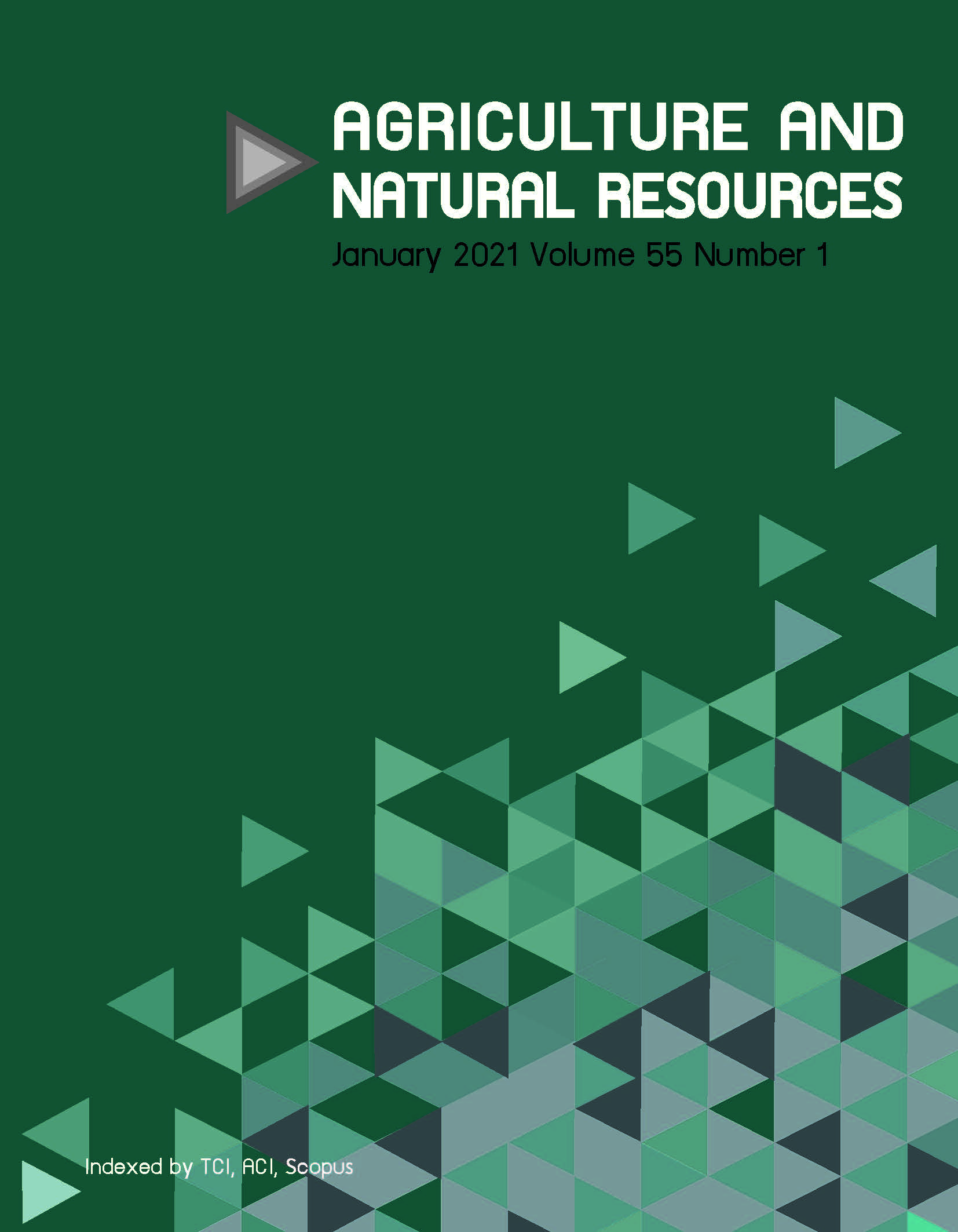Efficiency of monoterpene compounds for control of rice pest Pomacea canaliculata
Keywords:
Detoxification enzyme, Golden apple snail, Plant essential oil, Plant molluscicides, Pomacea canaliculataAbstract
Pomacea canaliculata (golden apple snail) is one of the most destructive and invasive rice pests in Southeast Asia and Thailand. This work focused on the molluscicidal efficiency of thymol, eucalyptol, and linalool against P. canaliculata under laboratory conditions. All essential oils made the snail motionless, closed its operculum shell, turned the soft body at the spire reddish and typically caused death within 24 hr. The toxicity levels of P. canaliculata after being exposed to the three essential oil compounds were significantly (p < 0.05) different at both 24 hr and 48 hr, with thymol being the most effective control (dose required for 50% mortality after 24 hr = 20.7 mg/L). Snails treated with thymol seemed to relax before death, with some typically recovering within 48 hr. The percentage of egg hatching in the treatment group (28.89–48.84%) was significantly (p < 0.005) reduced compared to the control (87-88%), with thymol being the most effective inhibitor (percentage of egg hatching = 28.89%). Glutathione-s-transferase (GST) and acetylcholinesterase (AChE) activities were reduced after snails were exposed to all three compounds (p < 0.05; correlation factor approximately1.25–1.50-fold and 1.64–2.14-fold for GST and AChE, respectively). However, carboxylesterase reduced only linalool and thymol. The findings indicated that all three essential oil compounds were viable alternatives to chemicals for controlling P. canaliculata.
Downloads
Published
How to Cite
Issue
Section
License

This work is licensed under a Creative Commons Attribution-NonCommercial-NoDerivatives 4.0 International License.
online 2452-316X print 2468-1458/Copyright © 2022. This is an open access article under the CC BY-NC-ND license (http://creativecommons.org/licenses/by-nc-nd/4.0/),
production and hosting by Kasetsart University of Research and Development Institute on behalf of Kasetsart University.







